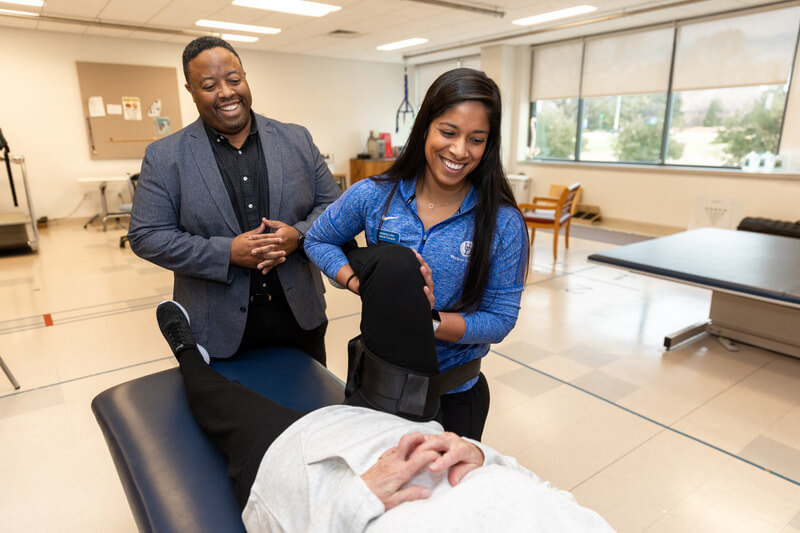
(© Aleksej - stock.adobe.com)
NEWARK, Del. — Hope could soon be on the horizon for those who suffer from chronic low back pain — and the answer may be all in the hips. Medical professionals have made significant strides in understanding and treating chronic low back pain in patients 60 and older, by honing in on hip-focused therapy.
This research, supported by the National Institute on Aging, is especially noteworthy given the limited focus on back pain in older adults in past studies.
“Unfortunately, the societal attitude is that older people don’t warrant the same level of care that younger people do when it comes to musculoskeletal problems,” says study author Gregory Hicks, Distinguished Professor of Health Sciences at the University of Delaware, in a university release. “But I don’t believe that for a minute.”
The study, known as the Manual Therapy and Strengthening the Hip (MASH) Trial, conducted at the University of Delaware, Duke University, and the University of Pittsburgh, is a landmark in clinical trials. It's possibly the first to test a physical therapy intervention tailored to older adults with chronic low back pain, who also suffer from hip pain and muscle weakness.
Between November 2019 and April 2022, the trial involved 184 participants. They were randomly assigned to either hip-focused or spine-focused therapies, conducted over eight weeks at various locations, including the Physical Therapy Clinic on UD’s Science, Technology and Advanced Research (STAR) Campus. The therapies were evaluated based on pain-related disability, walking performance, and the ability to rise from a seated position.
The findings reveal that hip-focused therapy led to a quicker reduction in disability from low back pain immediately following the intervention. However, by six months, both groups showed similar improvements. Further analyses indicated that the hip-focused therapy also resulted in greater improvements in walking endurance and chair-rise performance.

“It’s becoming quite clear, if you make the assumption that all low back pain is the same, you’re wrong,” explains Hicks. “If you can identify sub-groups of low back pain patients with similar traits, you can develop matched treatments, which hopefully lead to better outcomes.”
Hicks' previous National Institutes of Health-funded research, which involved a longitudinal study of older adults with chronic low back pain, highlighted the role of hip impairments. Using artificial intelligence and modeling tools, distinct sub-groups of chronic low back pain patients were identified, each with unique characteristics and treatment needs.
This research paves the way for precision medicine and rehabilitation, offering hope for more effective treatment strategies for the elderly. Hicks, with his background in epidemiology, is committed to further refining these interventions and extending them to other identified sub-groups.
“I’ve always had this sort of special place in my heart for this older age group,” notes Hicks. “When I started this work, there were a lot of naysayers. I’d tell them, ‘Read the literature — why are we excluding older adults from low back pain research?' We all hope to get older. Why ignore a place in time where we all hope to end up?”
With low back pain being the leading cause of disability worldwide, according to the World Health Organization, and cases increasing significantly over the past 30 years, this study marks a significant step forward in addressing a global health challenge.
The study is published in the journal The Lancet Rheumatology.










